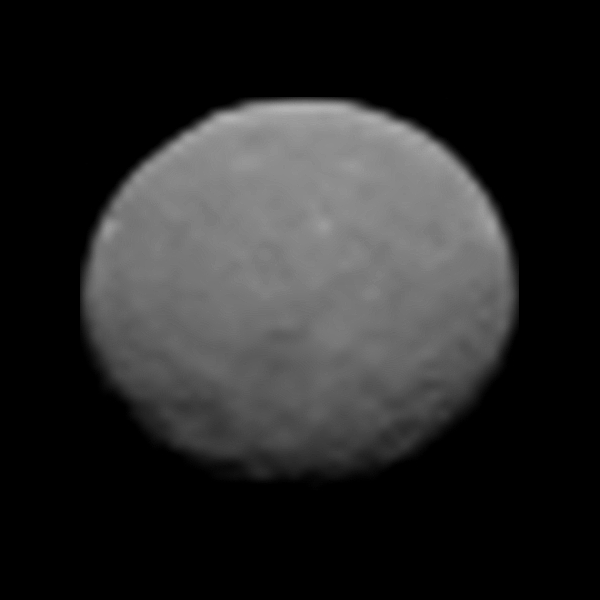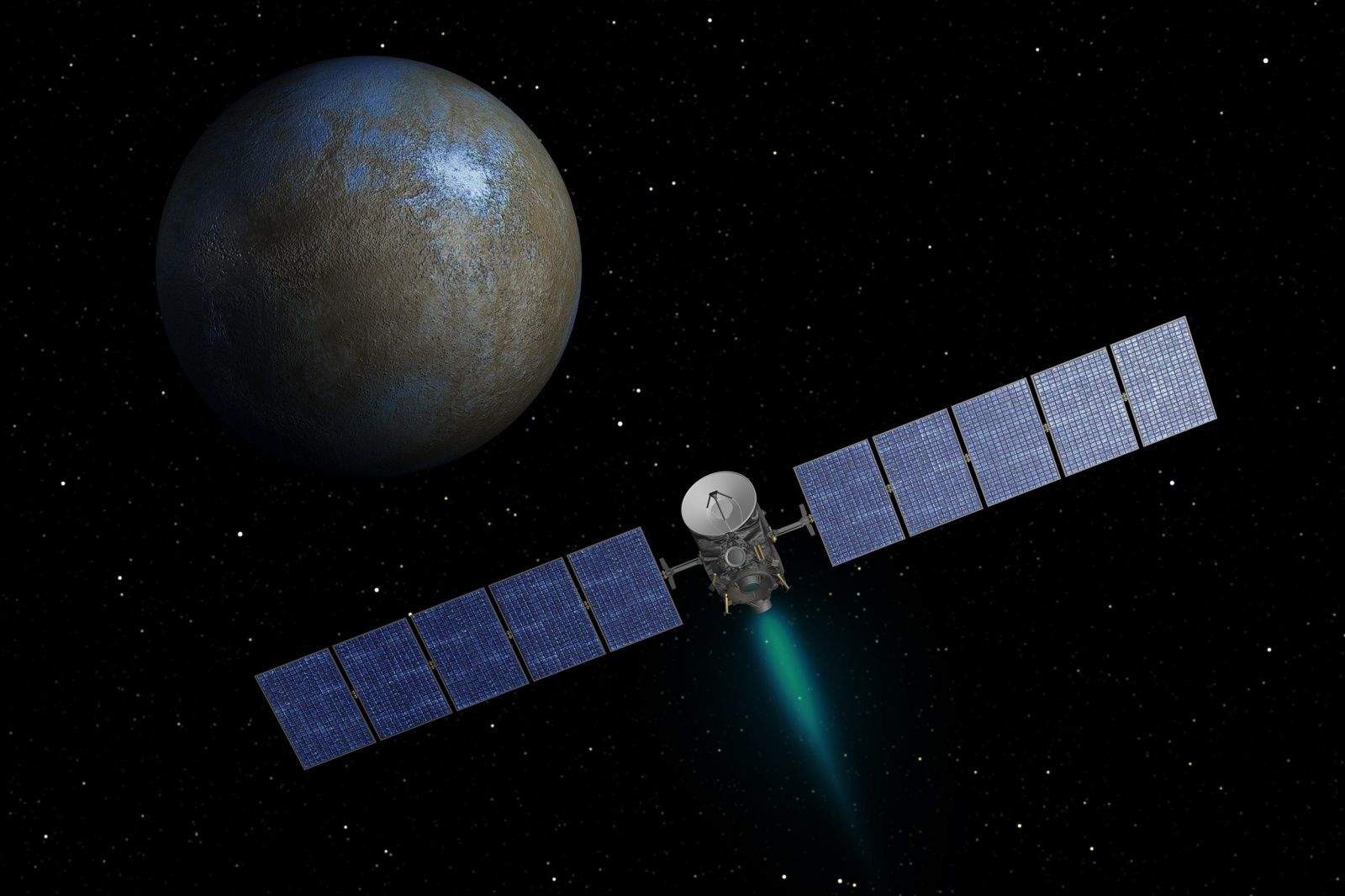The dwarf planet named after the Roman goddess of motherly relationships will soon have a new friend. And scientists and space-exploration geeks here on Earth can’t wait for that friend, the space probe Dawn, to start dishing.
Dawn, launched in 2007 to visit two bodies within the asteroid belt past Mars, is scheduled to enter an orbit of the dwarf planet Ceres on March 6. Ceres is the largest mass in the asteroid belt and has an icy mantle that may harbor an internal ocean of water under its surface. Talk of water on a planetary body always leads to questions of life.
Ceres has long been a curiosity to astronomers and space observers, and its status — is it an asteroid? a dwarf planet? — has been hotly debated ever since its discovery in 1801 by Giuseppe Piazzi.
Never mind all that. What’s that white spot?

The Hubble Space Telescope first detected a large white spot in pictures as early as 2003. High-resolution photos shot by Dawn earlier this month show that same white spot, ramping up the curiosity as the probe approaches. NASA released an animation of the photos today.
Scientists at the Jet Propulsion Laboratory are excited to learn more about the white spot but are tempering their excitement by saying “its nature is unknown.”
“We are already seeing areas and details on Ceres popping out that had not been seen before,” said Carol Raymond, deputy principal investigator of the Dawn mission, in a statement released by NASA. “Data from this mission will revolutionize our understanding of this unique body. Ceres is showing us tantalizing features that are whetting our appetite for the detailed exploration to come.”
The white spot could be a crater, water vapor or some kind of volcano. Judging by the time between photographs from different telescopes and cameras, the object appears to be a physical feature of the planet and not an image anomaly.
A better understanding is soon to come.
Dawn did a flyby of Mars in 2009 and then started a 14-month study of the protoplanet Vesta, another massive object in the belt, in 2011.
Dawn will be closest to Ceres in November. After it runs out of fuel, it will become a permanent satellite of Ceres.


